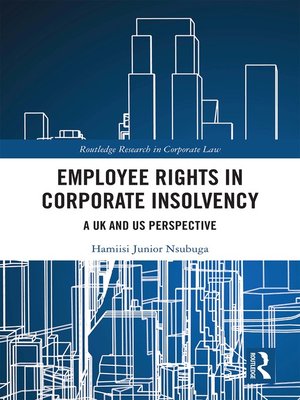Employee Rights in Corporate Insolvency
ebook ∣ A UK and US Perspective · Routledge Research in Corporate Law
By Hamiisi Nsubuga

Sign up to save your library
With an OverDrive account, you can save your favorite libraries for at-a-glance information about availability. Find out more about OverDrive accounts.
Find this title in Libby, the library reading app by OverDrive.



Search for a digital library with this title
Title found at these libraries:
| Library Name | Distance |
|---|---|
| Loading... |
This book analyses corporate rescue laws, processes and policies prescribed in
corporate insolvency or bankruptcy laws, and employment laws of the UK and
the US, with a particular focus on how extant employee rights are treated when
a debtor employer initiates corporate insolvency proceedings.
The commencement of formal insolvency proceedings by an employer affects
employees' rights and interests. Employment laws seek to protect employees' rights
and interests, while insolvency laws seek to promote corporate rescue, which may
entail workforce changes. Consequently, this creates a tension between whose
interest insolvency law should give primacy of protection. The book analyses how
corporate rescue processes such as administration, pre-pack business sales, company
voluntary arrangements, receivership and liquidation impact employee rights
and protection during corporate rescue proceedings in both jurisdictions. It goes
on to address how the federal system of government in the US and the diffusion
of power between federal and state law jurisdictions impact a uniform code of employee
protection during Chapter 11 bankruptcy reorganisation proceedings. The
book considers how an interpretative approach to law (Dworkin's Interpretative
Theory of Law) may be used to balance both employee protection and corporate
rescue laws during corporate insolvency in the UK and the US.
Of interest to academics, students and employment law practitioners, this
book examines the tension between corporate rescue laws and employment protection
laws during corporate insolvency in the US and the UK and how this
tension may be remedied or balanced.







